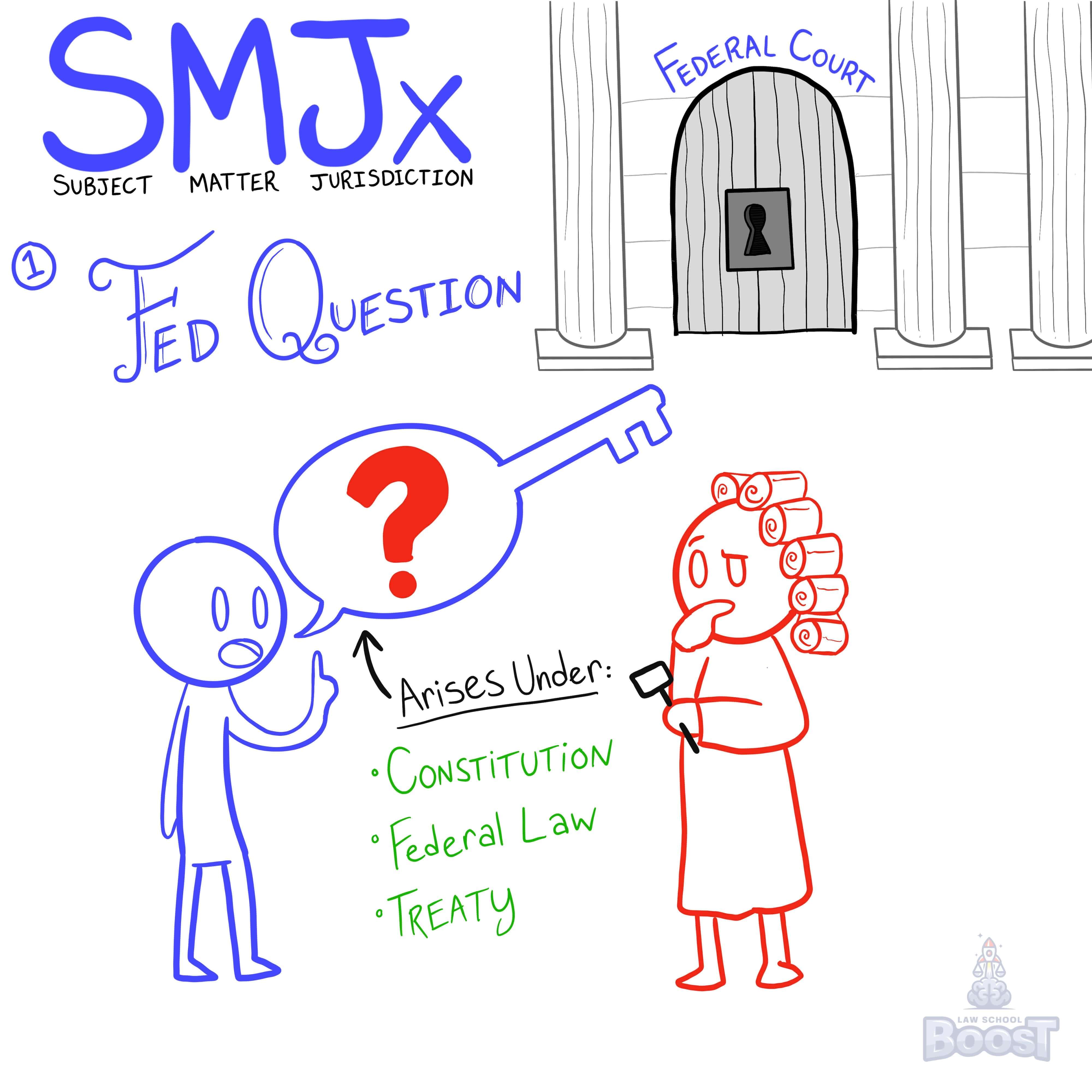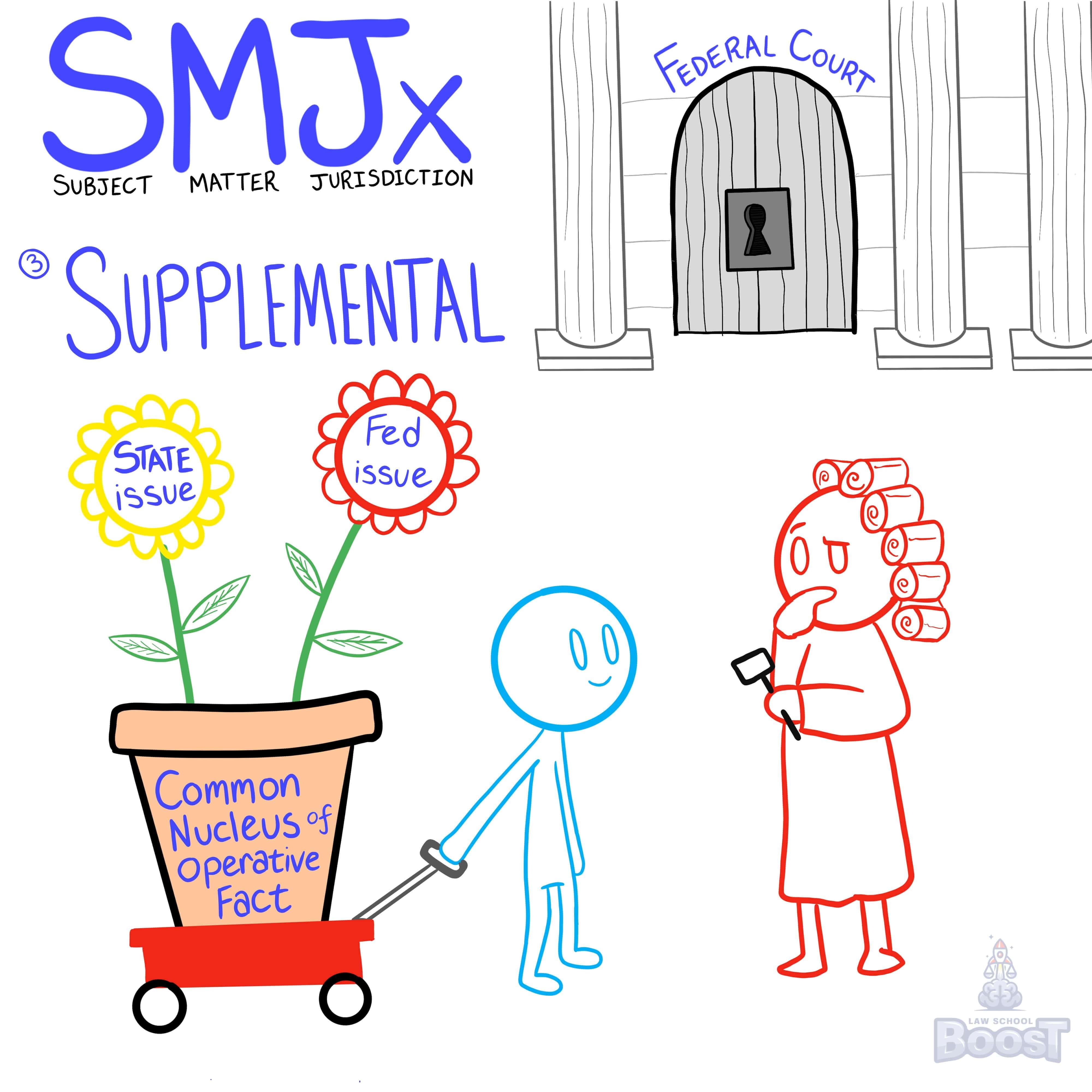🤤
Civil Procedure • Subject Matter Jurisdiction
CIVPRO#013
Legal Definition
Diversity claims require a good faith pleading of damages in excess of $75,000. In some situations, claims can be aggregated to reach the required $75,001+ threshold: (1) a single plaintiff can aggregate all claims against a single defendant; (2) a single plaintiff can aggregate all claims against multiple jointly and severally liable defendants; (3) plaintiffs cannot aggregate separate claims against multiple defendants*; and *(4)* multiple plaintiffs *cannot* aggregate claims against a single defendant *unless* they are enforcing a single title or right in a common and undivided interest.
Plain English Explanation
1. Single π + Single ∆ = okay
2. Single π + Multiple Jointly & Severally Liable ∆s = okay
3. Multiple πs + Multiple ∆s = not okay
4. Multiple πs + Single ∆ = not okay (unless enforcing single right or title in common/undivided interest).
2. Single π + Multiple Jointly & Severally Liable ∆s = okay
3. Multiple πs + Multiple ∆s = not okay
4. Multiple πs + Single ∆ = not okay (unless enforcing single right or title in common/undivided interest).
Hypothetical
Hypo 1: Sam lives in Texas. Bob lives in California. Sam wants to sue Bob in federal court for the $6,000 he loaned him a couple years ago that Bob never repaid, the $35,000 in damage Bob caused to Sam's home, and $40,000 for breach of contract. Result: Even though, individually, these claims do not meet the minimum $75,001+, because this lawsuit involves a single plaintiff vs. a single defendant, Sam can aggregate his claims, which amount to $81,000, which is sufficient for the amount in controversy requirement of diversity jurisdiction.
Hypo 2: Sam lives in Texas. Bob lives in California. Jill lives in Hawaii. Sam sells art. Bob buys a painting for $60,000. Jill buys a painting for $16,000. Both Bob and Jill pay with checks, and both of their checks bounce. Sam wants to sue both Bob and Jill in federal court. Result: Sam isn't allowed to aggregate the claims of random customers. Yes, together, Bob and Jill's debts are more than the amount in controversy requirement -- but they are two independent people whose claims are unrelated.
Hypo 3: Sam lives in Texas. Bob lives in California. Jill lives in Hawaii. Bob and Jill are partners in an art reselling company. The rest of the facts are the same as Hypo 2 above. Result: Now Sam can aggregate the claims because Bob and Jill are in a partnership, and are jointly and severally liable. In other words, though they bought art separately, they purchased under a shared partnership, which allows Sam to then aggregate their claims together and meet the amount in controversy requirement.
Hypo 2: Sam lives in Texas. Bob lives in California. Jill lives in Hawaii. Sam sells art. Bob buys a painting for $60,000. Jill buys a painting for $16,000. Both Bob and Jill pay with checks, and both of their checks bounce. Sam wants to sue both Bob and Jill in federal court. Result: Sam isn't allowed to aggregate the claims of random customers. Yes, together, Bob and Jill's debts are more than the amount in controversy requirement -- but they are two independent people whose claims are unrelated.
Hypo 3: Sam lives in Texas. Bob lives in California. Jill lives in Hawaii. Bob and Jill are partners in an art reselling company. The rest of the facts are the same as Hypo 2 above. Result: Now Sam can aggregate the claims because Bob and Jill are in a partnership, and are jointly and severally liable. In other words, though they bought art separately, they purchased under a shared partnership, which allows Sam to then aggregate their claims together and meet the amount in controversy requirement.
Visual Aids



Related Concepts
How can subject matter jurisdiction be based on a federal question?
How can subject matter jurisdiction be based on diversity of citizenship?
How is citizenship determined under subject matter jurisdiction?
What is subject matter jurisdiction?
What is supplemental jurisdiction?
What types of cases will California courts exercise general subject matter jurisdiction over?
When may a federal court hear a state claim?


